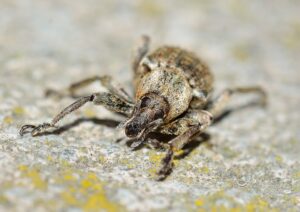6 Easy Methods to Get Rid of Pantry Bugs

The last thing we what to see is bugs in our pantry, these pests can become a nuisance causing us to discard food items. The invasion of these uninvited guess can cause us to spend those hard-earned dollars that could have gone to something else or placed in our savings. Are you having issues with pantry bugs and it seems almost impossible to clear your pantry of them?
The news is with the help of this guide you can bring those pests under control, many persons have followed these steps and have had success and you can too. Continue reading to find out how this is done.
The Identification of Pantry Pest
Weevils: Weevils have tick-wacky skin measuring about 2mm, the female weevil drills a hole in a piece of grain. The weevil then inserts a single egg followed by using her secretions to seal the open hole. When the egg hatches the weevil feeds extensively along with releasing toxins causing food products to be non-edible. Weevils love rice, barley wheat, oats, and corn. These pests can live up to two years.
Indian Meal Moth: The Indian meal measures 5/8-3/4 inches in length, they produce a web-like material inside food packages and in the corners of walls near the ceiling. Indian meal moth likes to bounce around the ceiling near lights. Indian moths love to feed on dried red peppers, bird seeds, candy, powdered milk, grains, seeds, nuts, dried fruits, and chocolate. These pests will contaminate foods making them unedible.
Flour Beetles: Flour beetles are 1/8-1/4 inches long and can be found crawling around your shelves or cupboards and hiding in crevices and cracks. These insects infest seasonings, flour, beans, rice, dried fruits, nuts, and spices. The damage that the flour beetle cause is producing foul-smelling secretion, their dead bodies, and fecal pellets. The toxin they produce makes foods unedible. If you suspect that the flour beetle was in your open food package don’t consume it, threw the food package away.
Check The Expiration Dates on Food Items: If you check the dates on food products for the expiration date and the expiration has passed don’t open the package discard it.
Regularly Check Food Items: Before using dry food products check for infestation, if there are infestations discard food products.
Purchase Foods in Tightly Sealed Packages: Purchase dry foods in packages that are sealed and show no sign of damage, Before purchasing food goods from the store check sugar, grains, flour, cereal, and nuts. etc… if the packages are damaged don’t purchase them.
Using Bay Leaves: Pantry moths hate the scent of bay leaves and will keep pantry moths at bay, bay leaves can be placed on each shelf of your pantry or one bay leaf can be added to a package of dry foods and canisters. That’s one bay leaf pre-package of dry foods or canisters.
Store Foods in Airtight Containers: Dry Foods that are stored in air-tight containers will discourage pantry bugs, metal containers, Tupperware and plastic bags such as Ziplocs will work as well.
Cleanup Food Particles Right away: It’s a known fact that food particles that are left on kitchen countertops, floors, shelves, and tables will attract not only roaches and rodents such as rats but can attract pantry insect pests as well. Ensure when preparing meals and after you have eaten to clean up thoroughly all food particles. Every 3-6 months use a vacuum to remove food particles that may have fallen or lodged between the cabinets and the counter. The vacuum can also be used to remove food particles from the shelves and underneath the stove.
The final word on how to get pantry bugs
These six steps are so simple and easy to use but give great results, so keep your pantry clean by following this guide. You will be so happy with the results as you create an environment that is free of pantry pests and will save you your hard-earned dollars.
About the author
Norman loves being in the garden, both at home and for his job....
he is 'Natures Little helper' being outdoors, growing his vegetables and flowers from an early age.
Now having spent over 22 years in the profession he want to give some of his knowledge to others...
his vast array of hints and tips you will find scattered over this site will help you no end growing plants in your garden.
